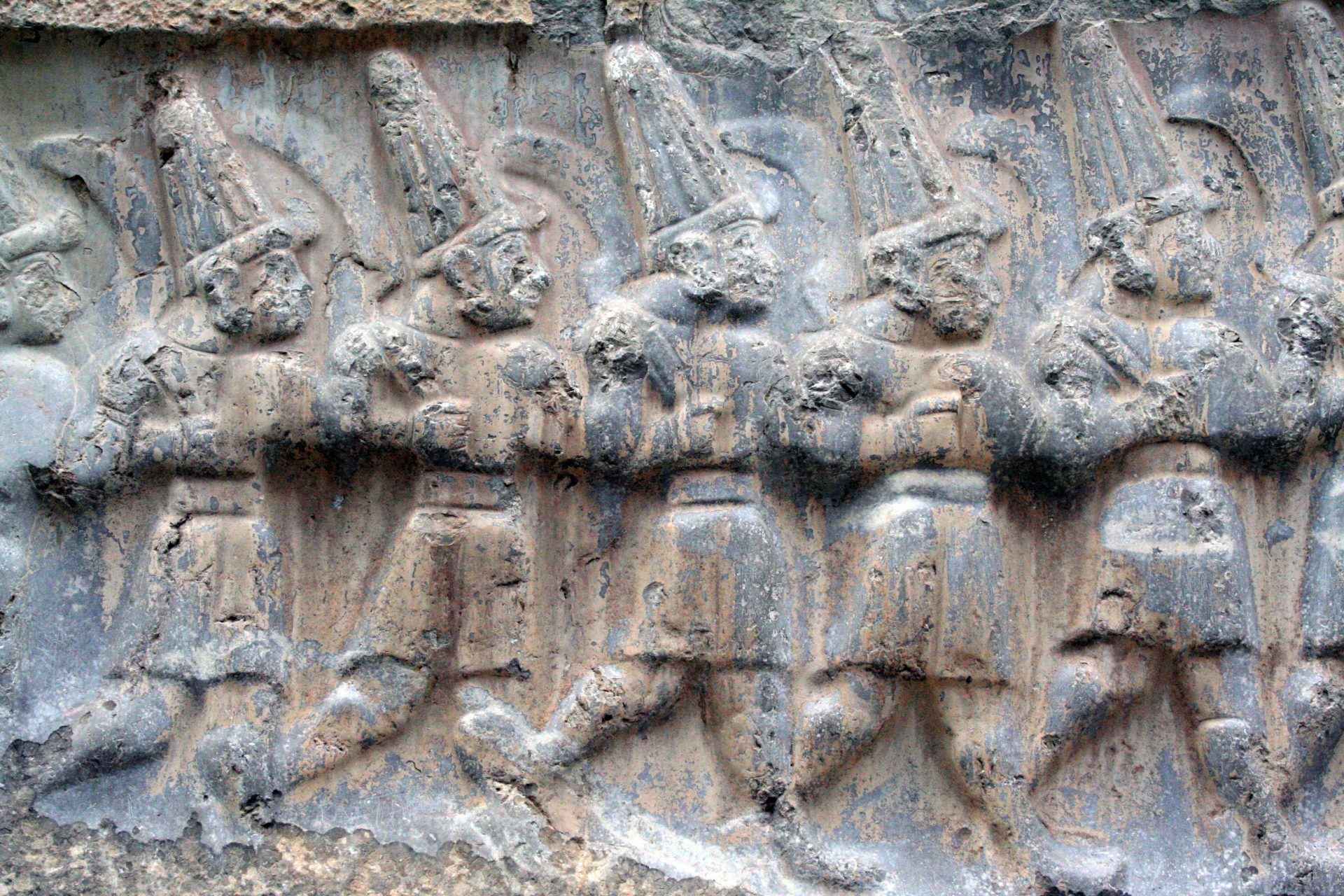The Hittites were an Anatolian people who established an Empire stretching across most of Anatolia, parts of the northern Levant and Upper Mesopotamia, centred on the capital of Hattusa near modern Boğazkale, Turkey.
Before the arrival of the Hittites, the region was inhabited by the Hattian people known as the “land of Hatti” around 2000 BC. The Hattians were absorbed into a new Hittite state either by conquest or gradual assimilation, but the origins of the Hittites are divisive, with some academics speculating a connection with the Yamnaya culture of the Pontic–Caspian steppe, the Ezero culture of the Balkans or the Maykop culture of the Caucasus.
Most of what we know about the Hittites comes from cuneiform text written in either Akkadian (the diplomatic language of the time) or in the various dialects of the Hittite confederation, and from diplomatic and commercial correspondence found in archives in Assyria, Babylonia, Egypt and the Middle East.
The founding of the Hittite Kingdom is generally attributed to either Labarna I or Hattusili I during the 17th century BC, with periods of expansion and contraction of territories during the Old Hittite Kingdom and the Middle Hittite Kingdom.
It was during the New Hittite Kingdom that the Hittites entered their Empire period, where kingship became hereditary and rulers were perceived with a “superhuman aura”. The Empires strength was dependent on the control of trade routes and natural resources, in particular the importance of Northern Syria that brought the Hittites into conflict with the Ancient Egyptians during the Battle of Kadesh in the late 13th century BC.

After the battle, an Egyptian–Hittite peace treaty, also known as the Eternal Treaty or the Silver Treaty was agreed by both Empires, but this marked the beginning of the decline of the Hittites, brought on by the rise of the Assyrian Empire that conquered surrounding kingdoms and threatened the Hittite trade routes.
The Assyrians, under Ashur-resh-ishi I had annexed much of Hittite territory in Asia Minor and Syria during the 12th century BC. During the same period, the supposed Sea People, a seafaring confederation had laid waste to many Late Bronze Age settlements along the Mediterranean coastline, and the Kaska tribe had begun a wave of expansion into eastern Anatolia.
It is believed that the Hittite capital of Hattusa was sacked by the Kaskas in 1190 BC and burnt to the ground, gradually becoming abandoned over a period of several decades as the Hittite Empire disintegrated to the encroaching Assyrians.

The Assyrians destroyed much of what remained, instilling their own culture and values over the remnants of the Hittite Empire. Although the Hittites disappeared from Anatolia at this point, there emerged a number of so-called Syro-Hittite states in Anatolia and northern Syria, but these gradually fell under the control of the Neo-Assyrian Empire between 911–608 BC.
The destruction of the Hittite Empire marks a period known as the Late Bronze Age collapse, where an economic decline of regional powers brought about the collapse of several major civilisations across the Near East, Aegean, Anatolia, North Africa, the Caucasus, the Balkans, and the Eastern Mediterranean.
Header Image Credit : Shutterstock







